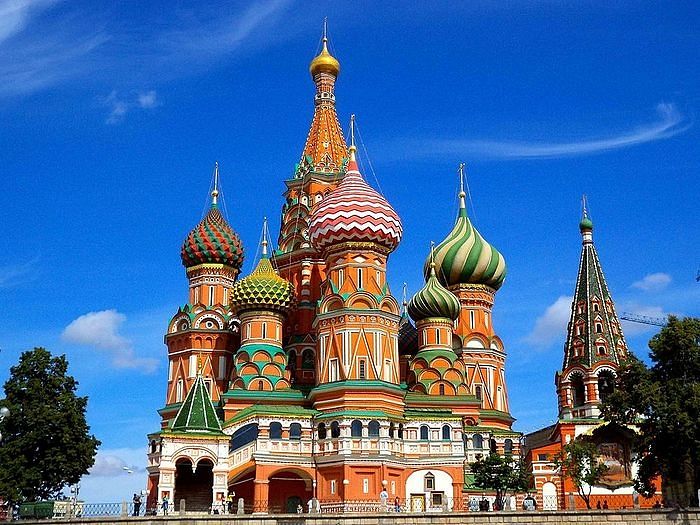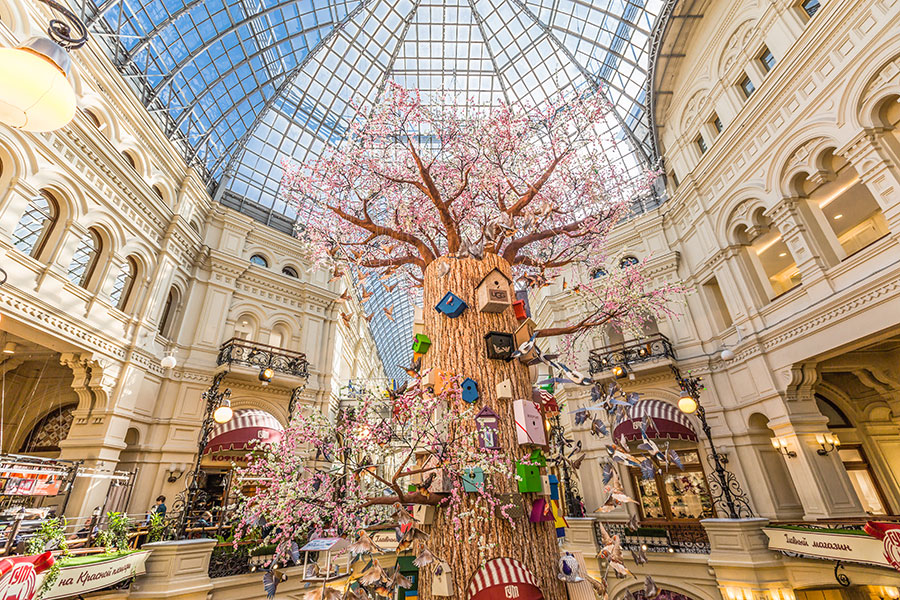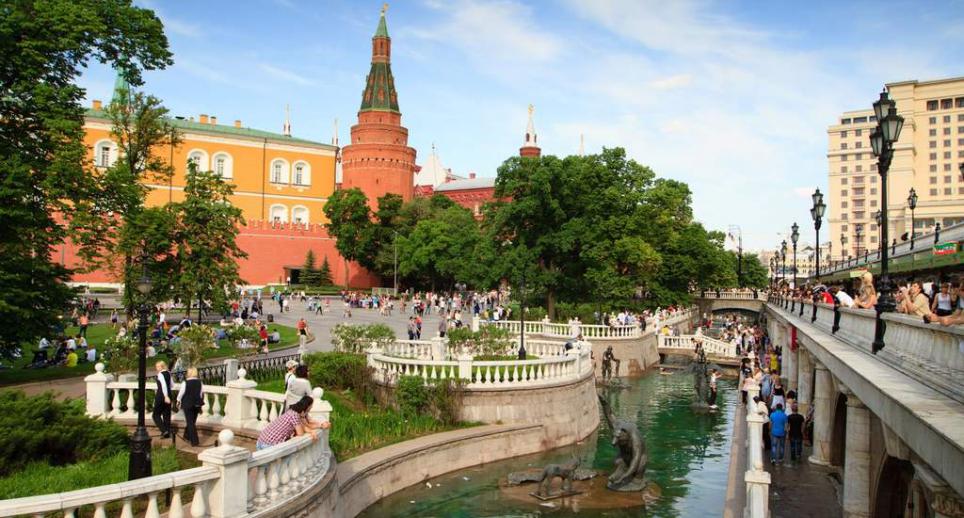Moscow is a very large city that attracts many tourists every year. The capital has many attractions. To talk about them, you have to write a whole volume. In our article we want to mention the most interesting places in the center of Moscow that are definitely worth a visit.
sights
The capital boasts a large number of attractions and simply interesting places. In Moscow you can see world-famous architectural monuments, museums, leisure parks, theaters, art galleries and much more. The selection of objects is incredibly large. The main attractions, of course, are the Moscow Kremlin and Red Square. For many tourists, they are the starting point. Wherever you are, getting to the main attractions of the capital is easy. There are a lot of metro stations in the center of Moscow. Coming to any of them, you will quickly get to Red Square.
The heart of the capital
Red Square and the Kremlin are the heart of the capital and the whole country. Therefore, it is worth starting a tour of the most interesting places in the center of Moscow from this point. For many centuries, the Kremlin towers are considered a symbol of Russian statehood.
The Moscow Kremlin is a whole complex of magnificent buildings that have been built over several centuries. It consists of the Kremlin wall, towers and buildings of Cathedral Square, located inside the Kremlin. There are numerous museums that are also worth a visit.
the Red Square
Another symbol of the capital is Red Square. This is the most visited and interesting place in the center of Moscow. Usually the square is open to guests. Only sometimes admission to it is limited. This happens infrequently: only in the case of concerts or in preparation for important government events. Throughout history, the square has witnessed numerous events. Here the most fateful events took place. Troops left for the war through the Spassky Gate, and the king’s decrees were read to the people from the Execution Ground.
The history of Red Square began with an ordinary trading place, which was moved outside the Kremlin in the fifteenth century. For several centuries, trade was actively conducted here. And on holidays fairs and festivities were held.
The appearance of the square began to change greatly since 1625. A Gothic tower was built over Spassky Gate, which became the decoration of this place. The people between the St. Basil’s Cathedral and the Spasskaya Tower began to call the Red Square - that is, beautiful. By order of Tsar Alexei Mikhailovich in 1661, the square officially received its current name. Experts believe that Red Square is one of the most beautiful squares in the world. Her crimson-patterned buildings create a stunning complex.
The Spasskaya Tower
Being in the very center of Moscow, it is worth seeing the Spasskaya Tower, which can be safely called a real symbol of the capital and the country. For many residents, the building is associated with the New Year, because there are chimes on it, which invariably announce the arrival of the holiday.
The tower was built in 1491, initially its height was two times less. But in 1514 the gate icon of the Savior was established in honor of the capture of Smolensk. Since then, the gates began to be considered sacred. It was possible to pass through them only with bare head, and the icon invariably bowed. The custom was honored even by foreigners. The Spasskaya Tower acquired its present look only in 1625, thanks to the English architect who came up with a tent made in the Gothic style. A clock was also installed, which over the years has changed several times. Today's chimes were installed in 1852. For the past 77 years, a scarlet star has flaunted a tower on a thin spire, which replaced the two-headed eagle that adorned the building from the seventeenth century until 1935.
St. Basil's Cathedral
St. Basil's Cathedral is another interesting place in the center of Moscow. It is no less recognizable than the Kremlin and Red Square. The temple is listed as a UNESCO World Heritage Site. The architectural complex consists of several churches, each of which is crowned with a colorful dome. The cathedral was built from 1555 to 1561. It was erected by order of Ivan the Terrible in honor of the victory over the Kazan Khanate. Each throne in the temple is dedicated to the days on which the main battles took place. Kazan fell on the Protection of the Mother of God, which was the reason for the appearance of the original name of the cathedral.

The chapel of St. Basil was built much later, in 1588. It housed the relics of the holy fool Vasily, who was afraid of Ivan the Terrible himself. In honor of him, the second name of the temple appeared. In the Soviet years, the cathedral was not demolished, because it was incredibly beautiful. For some time there was a museum in its walls. Since 1991, the temple returned to the fold of the Russian church.
GUM
GUM store in Moscow is not only a large shopping center, but also a real legend. Absolutely all people in the USSR knew about this store, even if they had never been to it. Arriving in the capital, the guests first of all visited the GUM. And it was not at all necessary to shop, you could just see. The current store building was built in 1893 on the site of the old Upper Trading Rows. The Guild of Merchants announced a competition, as a result of which the project of architect Pomerantsev won. According to his idea, the building was supposed to be made in a pseudo-Russian style. It was very important that it was in harmony with other buildings of Red Square.

The grand store was built at the expense of the guild. He was the real pride of the Russian merchants. In 1917, merchants were driven out of the building, and their goods were nationalized. The premises of the building housed Soviet institutions, communal apartments, which existed until the early sixties. There was a time when GUM even wanted to destroy, but the war prevented the implementation of its plans. And after its completion, it was decided to revive the store.
Currently, GUM is full of sales departments. Nevertheless, to this day, a reminder has been preserved that in Soviet times it was the main store of the USSR. Here everyone also plays the hits of those times. And in the famous grocery store No. 1 you can buy juice in three-liter jars and tea with an elephant.
Alexander Garden
Another attraction of Moscow is the Alexander Garden. All guests of the capital try to visit this place. It is located near all other attractions of the city center. Luxurious flower beds, well-kept lawns, shady trees and wide alleys make the Alexander Garden a favorite place to relax. The park occupies 10 hectares. There is enough space in it in order to enjoy the silence and have a good time in the heart of the city. There are always a lot of people here, among whom are not only guests of the capital, but also Muscovites. In spring and summer, it’s nice to sit in the park in the shade of trees, and in winter you can ride on a sled from the slides, which are equipped for people every year.

Presumably, the Alexander Garden was broken up by order of Tsar Alexander I at the beginning of the nineteenth century, when the capital was rebuilt after the destruction of Napoleon’s army. The Osip Beauvais project involved the equipment of three sections - upper, lower and middle. In our time, such a separation is only conditional. But the entrance to the Lower Garden is closed to the public. In the Upper Garden you can see the grotto "Ruins", reminiscent of the war of 1812. At the entrance to the park is the Eternal Flame and the Tomb of the Unknown Soldier.
China town
Each guest of the capital heard about the existence of Kitay Gorod. This is nothing but the ancient district of Moscow. Since ancient times, there have been shopping streets and marinas. Now on its territory are all the central streets of Moscow and the most important attractions. The area begins near the eastern wall of the Kremlin and reaches Lubyanka Square, New and Old Squares, as well as Chinese passage. In the northern part, it borders on Theater Square and Theater Passage, and in the south it ends at the Moskva River.
On the territory of Kitay Gorod all the central streets of Moscow begin: Ilyinka, Nikolskaya, Varvarka. All of them permeate the territory of the district and connect with other streets. Each tourist will certainly find himself in the territory of Kitay-Gorod (we’ll explain how to get to the district in Moscow below), because here is Red Square, the Kremlin, Alexander Garden, Vasilyevsky Spusk, Birzhevaya Square.
In the sixteenth century, the Moscow nobility began to move beyond the Kremlin, as there was no longer enough room for everyone. Gradually, the area began to acquire aristocratic features. Over time, Kitay Gorod became the business center of the capital. The easiest way to get to the historic district is by metro. There are a lot of stations in the city center: "Alexander Garden", "Lenin Library", "Arbat", "Theater", "Okhotny Ryad" and others.
Manege
Moscow Manege is a historical building. Now within its walls is a large museum and exhibition center. After a strong fire in 2004, the building was heavily rebuilt. Initially, the complex was built for the army, so that soldiers were trained within its walls. But the building was not used for its intended purpose. Various exhibitions have always been held here.
Taking a walk in the center of Moscow, you need to see Manezhnaya Square, which is a continuation of the Alexander Garden. It was equipped in the thirties of the last century. It was later reconstructed. Now there is Okhotny Ryad underground, and fountains and sculptures adorn the surface of the square.
Arbat
Old Arbat is sung by artists and performers. The ancient street became completely pedestrian in the second half of the last century. It is believed that if you did not visit Arbat, then - and was not in Moscow. And there is some truth to this. Tired of the bustle of the city, it is here that you can relax and relax with your soul. The unique atmosphere of Arbat and its alleys, courtyards is the atmosphere of ancient Moscow with its color and famous Okudzhava songs.
What to see on the Arbat? There are plenty of attractions in the area. On both sides of the street are ancient buildings that can be used to study history. Here is the restaurant "Prague", a house owned by relatives of Natalia Goncharova. And in house number 53 now is the Pushkin Museum-Apartment.
The center of culture on the Arbat is the theater. Vakhtangov. The monumental building is located approximately in the middle of the street. It was built in the mid-twentieth century. In addition, the best museums of Moscow are located on the Arbat. In the center of the capital there are incredibly many of them, and each institution is of great interest.
Guests of the city will be interested in the Museum of Optical Illusions, which is located in one of the lanes of the Arbat. No less attractive is the Museum of the History of Corporal Punishment, whose exposition tells of executions and torture.
If you want to plunge into the world of beauty, be sure to check out the Perfume Museum, located in a nineteenth-century mansion. Here you can not only learn a lot about the creation of perfumes and aromas, but also smell vintage aromas. The collection of establishments is considered the largest in the world.
In the Arbat area, there is also a memorial apartment for Andrei Bely.
Basmanny
Basmanny district is a former German settlement, which began to be built up in the fifteenth century, when the first German specialists in various industries began to be invited to Russia. You can get here by metro to the Baumanskaya station. The historic area is of particular interest to tourists. Here is the Cathedral of the Epiphany, the city library of Pushkin, the estate of Count Musin-Pushkin, the estate of the Decembrists. There are more than enough historical buildings in the Basmanny district. Each of them has its own story. Once upon a time, they all belonged to famous people.
Instead of an afterword
The central part of Moscow is a cluster of the most interesting and prominent places in the capital. Sightseeing must begin from here. Here you will find objects for every taste.